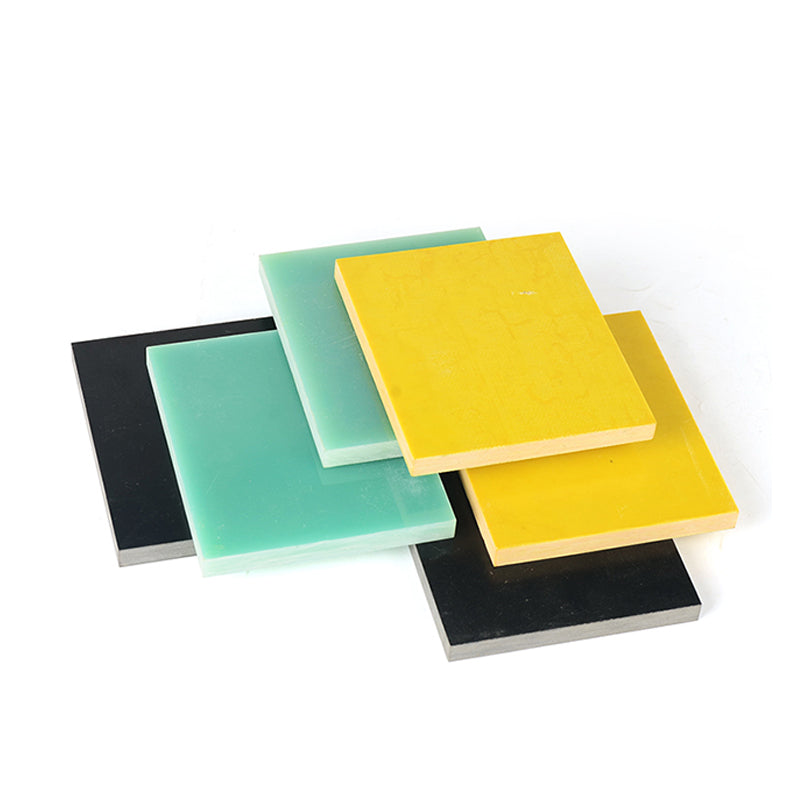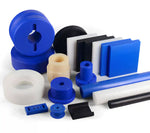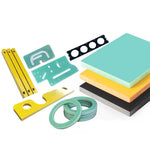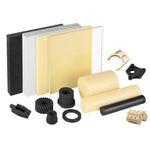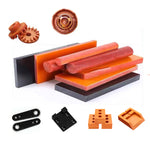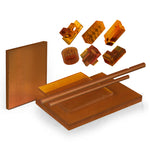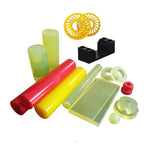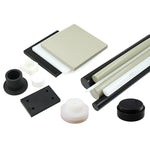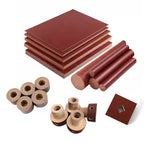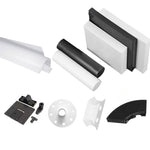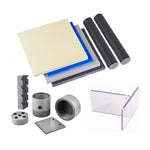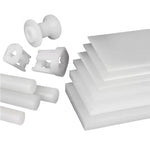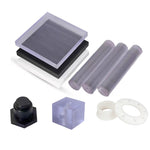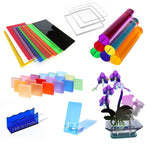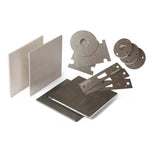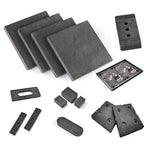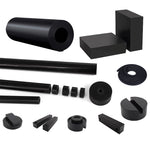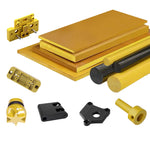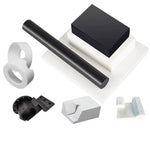Transform Your Design Into Precision Reality
Custom plastic machining with Swiss precision




Pharmaceutical and medical industry
Advanced Polymer Solutions for Medical & Pharmaceutical Applications
We specialize in the custom fabrication and precision CNC machining of high-performance medical-grade plastic components. From rapid prototyping for R&D to full-scale production, we deliver parts that meet the stringent demands of the healthcare industry for safety, reliability, and performance.
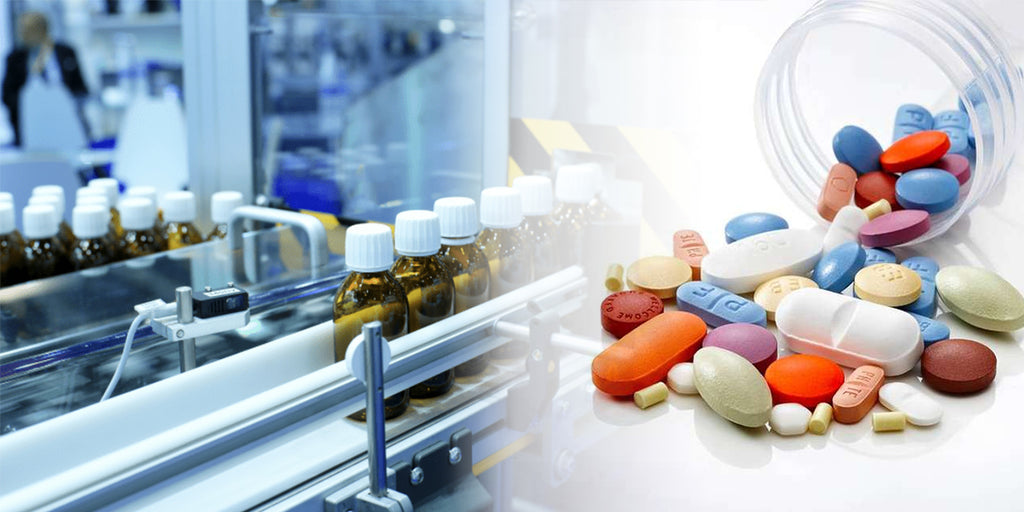
Your Partner for Critical Medical Components
Choosing a manufacturing partner in the medical field is a critical decision. We build trust not on certifications, but on tangible results, engineering expertise, and a flexible, customer-first approach.
- Uncompromising Precision: Our state-of-the-art CNC machines deliver a standard tolerance of ±0.03mm (±0.0012"), guaranteeing that your parts function perfectly in critical assemblies.
- Collaborative Engineering Support: We offer Design for Manufacturability (DFM) analysis to optimize your designs for efficiency, reduce costs, and improve end-product performance.
- Accelerated Development Cycles: With No Minimum Order Quantity (No MOQ), you can iterate faster—from a single prototype to low-volume pilot runs—without large upfront investment.
- Global Reach & Logistics: We provide reliable, free standard shipping options to major global markets, ensuring your supply chain remains uninterrupted. Expedited shipping is available for urgent needs.
Solving Key Challenges in Medical & Pharmaceutical Device Manufacturing
We machine and fabricate advanced polymers to overcome common hurdles in product design and function, providing tailor-made solutions for specific applications.

Surgical, Therapeutic & Implantable Devices
Challenges: Need for biocompatibility, resistance to repeated sterilization (autoclave, gamma, EtO), radiolucency for imaging, and high mechanical strength.
Our Solutions: Precision machining of implant-quality polymers and autoclavable plastics for reusable instruments and single-use tools.
- Materials: PEEK, UHMW-PE, PEI (Ultem), PPS, PTFE.
- Services: 5-Axis CNC Milling & Turning, Laser Engraving for part marking.

Diagnostics, Labware & Life Science Instruments
Challenges: Requirement for optical clarity, chemical resistance to reagents, dimensional stability for accurate analysis, and non-reactivity.
Our Solutions: Fabrication of transparent manifolds, microfluidic components, test fixtures, and instrument housings.
- Materials: Polycarbonate (PC), Acrylic (PMMA), PP, PVC.
- Services: Plastic Bending, adhesive bonding, and high-polish machining.
Housings, Seals, Gaskets & Connectors
Challenges: Need for durability, impact resistance, flexibility for sealing, and specific electrical or thermal insulation properties.
Our Solutions: Injection molding and fabrication of robust enclosures, biocompatible seals, and connectors.
- Materials: ABS, Silicone, HDPE, POM (Delrin®).
- Services: Injection Molding, Plastic Welding, assembly services.
Material Selection Guide for Medical Applications
Choosing the right polymer is critical for device success. Below is a guide to some of our most commonly used medical-grade plastics. Our engineers are available to provide a more detailed consultation based on your specific needs.
| Material | Key Characteristics | Common Medical & Pharmaceutical Applications | Sterilization Compatibility |
|---|---|---|---|
| PEEK | Exceptional strength, stiffness, biocompatibility, chemical inertness, high-temp resistance. | Spinal implants, trauma fixation devices, dental healing caps, cardiovascular devices. | Autoclave, Gamma, EtO, H2O2 Gas Plasma |
| UHMW-PE | Extremely high impact strength and abrasion resistance, low friction, biocompatible. | Orthopedic joint replacements (hip, knee), bearings, wear-resistant components. | Gamma, EtO (Not Autoclavable) |
| PEI (Ultem®) | High dielectric strength, excellent heat & flame resistance, hydrolytic stability. | Reusable surgical tools, electrical connectors, instrument trays, manifolds. | Autoclave, Gamma, EtO, H2O2 Gas Plasma |
| Polycarbonate | High impact strength and toughness, excellent clarity, good dimensional stability. | Dialysis filter housings, surgical instrument handles, IV connectors, lenses. | Gamma, EtO (Limited Autoclave) |
| Polypropylene | Good chemical resistance, lightweight, fatigue resistance, cost-effective. | Disposable syringes, storage containers, non-woven fabrics, flexible pouches. | Autoclave, EtO (Not Gamma) |
| PTFE (Teflon®) | Extreme chemical inertness, very low friction, high-temp stability, biocompatible grades available. | Catheters, analytical instrument components, seals, liners for fluid handling. | Autoclave, EtO |
Explore Our Proven Expertise
Theory is one thing, but application is everything. We invite you to review our portfolio of custom plastic case studies, where we detail real-world challenges and the innovative solutions we delivered for our clients.
See firsthand how our combination of material knowledge and manufacturing excellence translates into successful outcomes for complex projects.
View Case StudiesTurn Your Design into a High-Performance Medical Component
Let our experts help you navigate the complexities of material selection and the manufacturing process. Upload your CAD file (STEP, IGS, XT) and project requirements to receive a comprehensive quote from our engineering team.
Upload Your File & Get A QuoteFor questions or to discuss your project, email us at beeplastic@beeplastic.com.
Custom Plastic Fabrication
1pc to 10,000+ | ±0.03mm | No MOQ
General
HDPE
PP
PVC
ABS
Engineering
POM
Nylon
PC
PMMA
High-Performance
PEEK
PEI
PTFE
Composites
FR-4
G10
Flexible
TPU
Silicone
Why Choose BeePlastic?
Get Quote in 24h
Industries: Automotive • Medical • Food • Lab • Semiconductor
Free consultation → beeplastic@beeplastic.com
24H QUOTE DELIVERY
Upload CAD, get quote in 24 hours
NO MOQ REQUIRED
From 1 prototype to high volume
±0.03MM PRECISION
Advanced CNC with full QC inspection
1000+ TONS STOCK
26+ materials ready to ship

